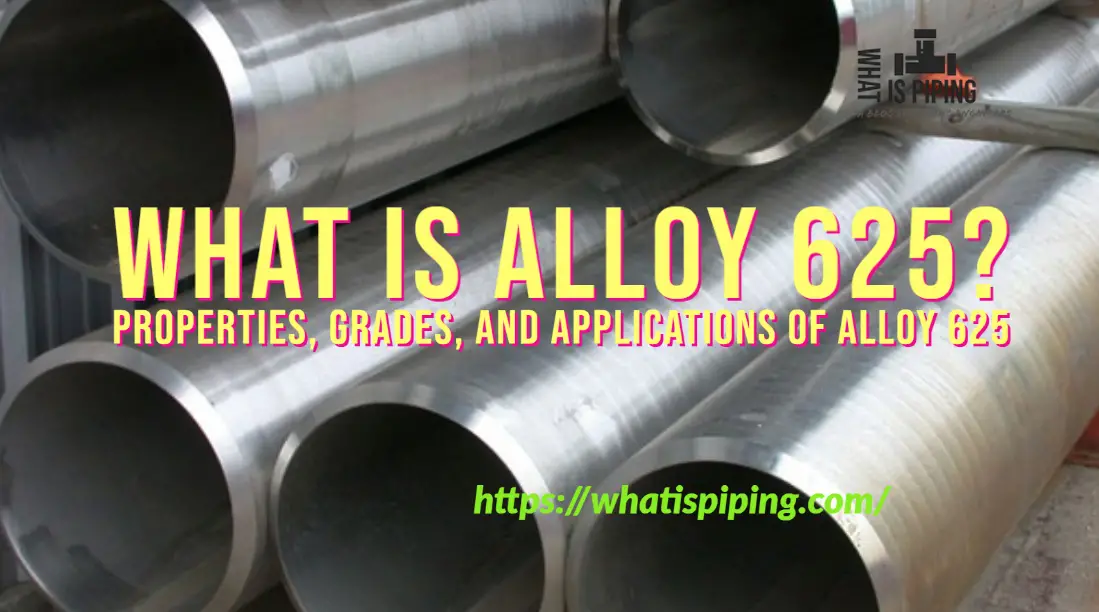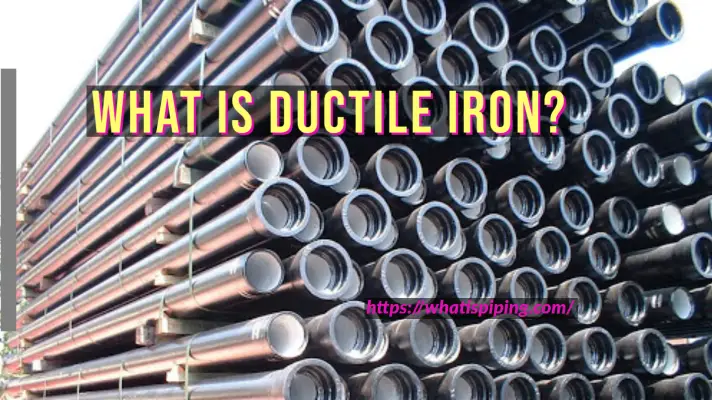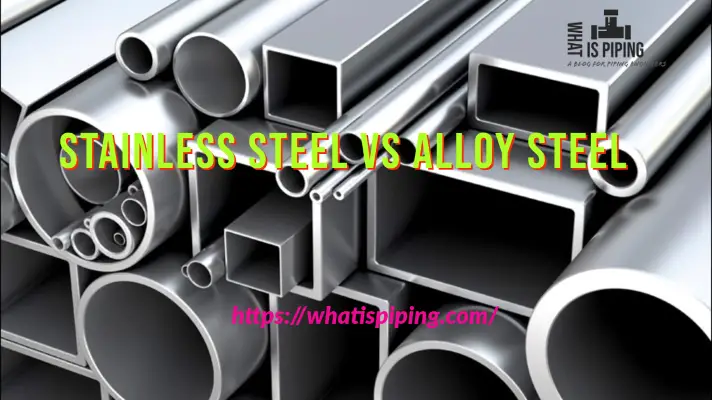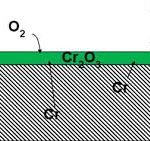Hastelloy is a nickel super-alloy having very high corrosion resistance. It consists of nickel, chromium, and molybdenum as the main constituent elements. Along with corrosion resistance, Hastelloy metal has high-temperature resistance. In the chemical, petrochemical, pharmaceutical, and oil & gas industries, the application of Hastelloy material is increasing. In this article, we will discuss the properties, applications, and grades of Hastelloy.
What is Hastelloy Metal?
Hastelloy is an incredibly strong and corrosion-resistant nickel alloy used widely for highly corrosive chemicals and acids. The addition of chromium and molybdenum improves its high-temperature and corrosion resistance properties. Hastelloy metal is ductile and therefore, can be easily formed.
Hastelloy is manufactured by combining raw elements during the hot liquid state. In general, Hastelloy material possesses 1% to 25% chromium, 5% to 30% molybdenum, 0% to 30% iron, and balance nickel material. Sometimes, other elements like carbon, tungsten, vanadium, and titanium are also added.
Once the metals are combined, smelted, and mixed together, they are cast to produce the required component.
Properties of Hastelloy
Though the properties of Hastelloy vary depending on the grades, it usually has the following properties:
- Excellent corrosion resistance
- Density: 8.89 g/cm3
- Melting Range: 1323-13710C
- Tensile Strength: 690 to 783 MPa
- Good weldability
- High-Resistance against oxidizing agents and acids
Hastelloy Alloy Types and Grades
Depending on the chemical composition of the Hastelloy material, there are various grades of Hastelloy. Common Hastelloy metal grades are:
- B-type Hastelloy materials
- C-type Hastelloy materials
- Hastelloy G-types
- Hastelloy X, and
- Hastelloy N
B-Type Alloys
Hastelloy B-type superalloys have a high percentage of nickel and molybdenum. B-grade Hastelloy is known for withstanding extremely reducing environments. Some of the B-type Hastelloy materials are:
B-2 Alloy (UNS N10665): B-2 Hastelloy material contains 65% nickel and 30% molybdenum. It also has a small percentage of carbon, iron, silicon, chromium, cobalt, manganese, and sulfur. B-grade alloy provides superior corrosion resistance to hydrochloric acids but is poor for oxidizing agents.
B-3 Alloys (UNS N10675): This alloy provides excellent resistance against pitting corrosion and has superior thermal stability as compared to B-2 alloys. B-3 alloys have 65% nickel and 30% molybdenum in chemical composition with traces of chromium, cobalt, and manganese.
C-Type Alloys
Hastelloy of this grade contains a high percentage of nickel, chromium, and molybdenum. Chromium increases high-temperature properties and resistance against reducing environments. Hastelloy C grades are suitable for cold and hot working. Grade C Hastelloy metal is the most widely used Hastelloy material. Common C-type Hastelloy materials are:
C-4 Hastelloy (UNS N06455): Type C-4 Hastelloy contains 60% nickel, 18% chromium, 16% molybdenum, 3% iron, 2% Cobalt, and remaining silicon, carbon, sulfur, titanium, etc. It has high ductility and corrosion resistance.
C-22 Hastelloy (UNS N06022): C-22 Hastelloy consists of 58% nickel, 20% chromium, 13% molybdenum, 3.5% tungsten, 2.5% cobalt, and traces of other elements. Widely known for its weldability, the C-22 Hastelloy is the most used alloy for pharmaceutical reaction vessels and desulfurization systems.
Hastelloy C-276 (UNS N10276): This grade of Hastelloy finds application in petrochemical industries. It contains 59% nickel, 16% molybdenum, 15% chromium, 4% tungsten, and traces of other elements. It has high corrosion resistance against oxidizing agents, pitting, stress corrosion cracking, and intergranular corrosion.
C-2000 Hastelloy: It has excellent resistance against oxidizing media and is used in chemical process equipment applications.
G-Type Alloys
Suitable for welding using TIG, SAW, SMAW, and G-type Hastelloy materials contain tungsten as one of the alloying elements. The main alloys of this group are:
Hastelloy G-3 (UNS N06985): This superalloy contains nickel, chromium, tungsten, iron, molybdenum, and cobalt as the dominant components.
G-30 Hastelloy (UNS N06030): It consists of 43% nickel, 30% chromium, 15% iron, 5% cobalt, 4% tungsten, 1.5% Manganese, and traces of other elements.
X-Type Alloys
Hastelloy X alloy (UNS N06002): It has superior oxidation resistance, high-temperature strength, and SCC resistance. Chemically Hastelloy X contains 44% Nickel, 23% Chromium, 20% iron, 10% molybdenum, 1% of Manganese and Silicon, and traces of other elements. They can be cold-worked and welded. This type of Hastelloy material is used for industrial furnace and gas turbine applications.
Hastelloy N (UNS N10003)
Hastelloy N contains 71% nickel, 16% molybdenum, 7% chromium, 5% iron, 1% silicon, and traces of other elements. Due to its higher temperature oxidation resistance properties, Hastelloy N is used in industrial applications like chemical process equipment.
Other Hastelloy grades are:
- Hastelloy D-205
- Hastelloy G50 (UNS N06950)
- Hastelloy S (UNS N06635)
- Hastelloy W (UNS N10004)
- Hastelloy G-2 (UNS N06975)
Applications of Hastelloy Material
The outstanding corrosion resistance of Hastelloy makes it an ideal choice for any moderate to severely corrosive environment. Hastelloy pipes, exchangers, pressure vessels, and valves are quite common in the chemical and petrochemical industries. This metal is also used in reactor vessels in the chemical and nuclear industries. Other industries that use Hastelloy are:
- Geothermal
- Mining
- Solar Power
- Biomass
- Sea-Water
- Petrochemical
- LNG
- Aerospace
- Water Desalination
- Paper and Pulp, etc
Hastelloy works as fully resistant to the following fluid services:
- Acids like Acetic Acid, Hydrochloric acid, Sulphuric acid, phosphoric acid, nitric acid, boric acid, carbolic acid, citric acid, uric acid, malic acid, salicylic acid, gallic acid, etc.
- Chlorides like Aluminum Chloride, Ammonium Chloride, Amyl Chloride, Barium Chloride, Calcium Chloride, Ethyl Chloride, Zinc Chloride, Potassium Chloride, Titanium Tetrachloride, Sodium Chloride, Magnesium Chloride, Ferric Chloride, etc
- Nitrates like Ammonium Nitrate, Copper Nitrate, Cupric Nitrate, Nickel Nitrate, Sodium Nitrate, Mercurous Nitrate, Magnesium Nitrate, Potassium Nitrate, Ferric Nitrate, etc
- Hydroxides like Ammonium Hydroxide, Calcium Hydroxide, Magnesium Hydroxide, Sodium Hydroxide, Potassium Hydroxide, Ferric Hydroxide, etc
- Sulfates like Aluminum Sulfate, Ammonium Sulfate, Copper Sulfate, Zinc Sulfate, Nickel Sulfate, Sodium Sulfate, Magnesium Sulfate, Sodium Bisulfate, Potassium Sulfate, etc
- and many more
Hastelloy vs Monel
The main differences between Hastelloy and Monel materials are tabulated in the table-1 below:
| Hastelloy | Monel |
| Hastelloy is widely used in acidic environments. | Monel is widely used for marine applications. |
| Hastelloy is relatively cheaper due to the low amount of nickel (Usually less than 60% nickel) | Monel is relatively costlier as it has more nickel (60 to 70% nickel) |
| Hastelloy has a higher melting point (around 2550 Deg F) | Monel has a melting point of 2460 Deg F. |
| The tensile strength of Hastelloy is lower (in the range of 690 to 783 Mpa) | Monel has a higher tensile strength (550 to 1100 Mpa) |









Great alloy in deed!
Good summary of the uses & properties of Hastelloy. As Foundryman i had experience in casting the various grades of the alloy in Bangalore.
Hats off to you buddy.
Keep doing that
Hi Mr Anup Kumar
Thank you So much for creating this wonderful forum
It contains lots of knowledgeable things
Keep it up
Could Hastel aaloy be suitable for hydrogen storage?
We have bought a GFM radial forging machine SKK14. Looking for engineers and experts in the forging and piping field, for the best use of this machine.